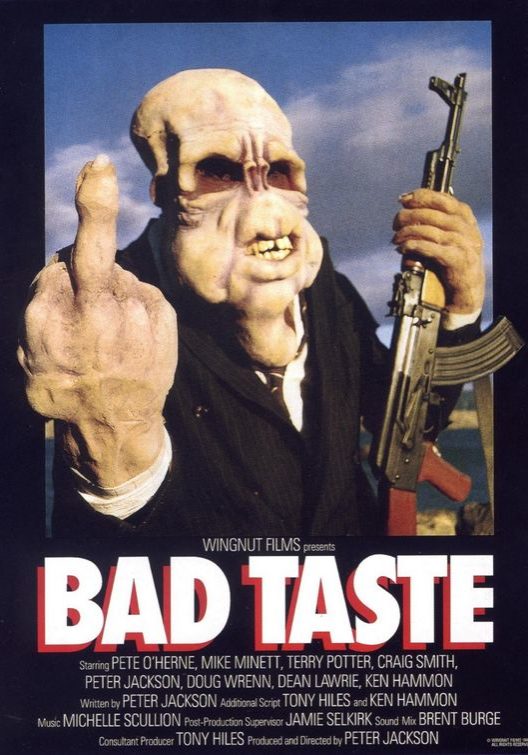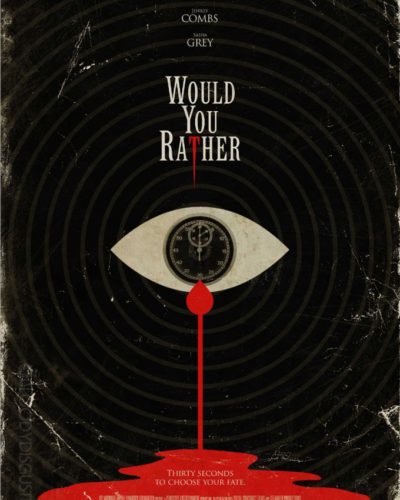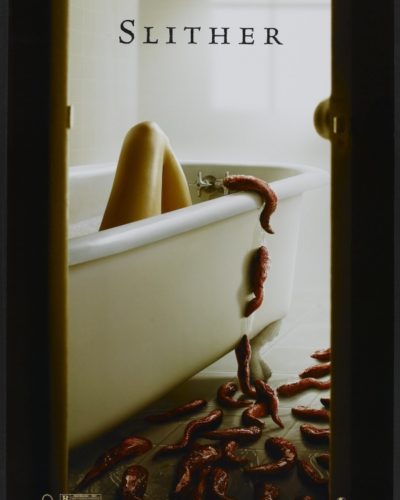The Taste of Horror: A Fresh Bite into Peter Jackson’s Splatterfest
“If you don’t feel well tomorrow, you know who to blame!” exclaims an alien invader in the darkly comedic horror movie “Bad Taste.” Released in 1987, this low-budget outlier marked the directorial debut of New Zealand filmmaker Peter Jackson. It’s a schlockfest that follows a group of governmental agents called the Astro Investigation and Defence Service as they combat extraterrestrial forces intending to harvest humans for their intergalactic fast-food chain. Lacking spoilers, but rest assured, the title “Bad Taste” is as much a cheeky nod to the film’s humor as it is to its content.
Artfully Disgusting: Crafting Atmosphere in “Bad Taste”
“Bad Taste” creates a lo-fi horror atmosphere that is more backyard-B-movie than big-studio blockbuster. Rather than relying on suspense or a sense of foreboding, the film orchestrates its horror through a blend of shocking visuals and exaggerated gore that borders on slapstick comedy. The horror is visceral, in your face, and often tongue-in-cheek—a decision that gives the film a distinctive place in the gore subgenre. Jackson excels at transforming the New Zealand landscape into a battleground between the absurd and the macabre, painting a picture that’s as bizarre as it is unnervingly engaging.
Cinematic Bloodbath: The Visuals That Chew on Genre Norms
Considering its budget constraints, “Bad Taste” delivers its terror with a surprisingly innovative visual panache. Jackson’s cheeky use of camera angles — often low or canted — gives a grandiose feel to the otherwise shoestring operation. The practical effects are gleefully rudimentary; their homemade charm amplifies the feeling of an ’80s horror playground. The lighting and color palette eschews the gloomy grimdark of many contemporaries, opting instead for bright daylight which conflicts with the gruesome content, to great effect. It’s the splatter that tells the story here, painted in bright reds against often pastoral backdrops, making the film both distinctive and disturbing.
Sounds Like Fear: The Role of Audio in Amplifying Alarms
In “Bad Taste,” the soundtrack and sound effects play second fiddle to the visual splatter, yet they still create a resonant backdrop to the bloodshed. The squelch of gore and the comical squawks of the aliens bolster the film’s campy tone. There are notable silences in the film, underscoring the shock value of what’s on screen, accentuating the moments of visual horror with their absence. The soundscape does not dominate but instead punctuates the visual flair, with the volume of everything turned up to eleven to match the rest of the film’s excesses.
Camp and Characters: Acting on the Edge of Excess
Don’t look to “Bad Taste” for deeply developed characters or profound emotional range—the acting is broad and the characters are caricatures, but this is intentional. The performances feel almost like a nod to the audience, acknowledging the absurdity of the situation, with the cast contributing enthusiastically to the dark humor and schlocky demeanor of the film. The “heroes” are more like horror hobbyists than professionals, muddling through their encounter with the alien threat in a way that feels believably human, if not always technically adept. It’s all part of the film’s charm.
Fright Mechanics: The Mixed Menu of “Bad Taste”
Body horror is the main dish in “Bad Taste,” served with a side of shock and garnished with grotesquerie. The film fits snugly within the splatter subgenre, celebrating excess and violence with a knowing wink. Jackson’s methods to appall and amuse are all about the practical, from the homemade weapon props to the unapologetically graphic effects of exploding heads and alien giblets. The techniques are no subtle feat—they’re blatant, and they’re joyously crafted. The horror here is in the audacity and the exuberance with which it’s flung onto the screen.
Meat and Messages: “Bad Taste” as Cultural Commentary
While “Bad Taste” is not heavy on thematic depth, it does nibble on concepts of consumerism and the corporatization of food—the aliens are, after all, turning humans into fast food. The message is as subtle as a sledgehammer to the face, but it’s there. It’s a light critique, buoyed by the levity with which it is presented, and the film leverages its horror for the laughs just as much as the chills.
Final Judgment: A Feast for the Senses or a Rancid Bite?
“Bad Taste” is horror served with a heaping helping of humor. While it may not be universally palatable, it’s a wild ride that horror aficionados and those with an appetite for the eccentric will thoroughly enjoy. It’s not genuinely frightening in the traditional sense, but it’s thought-provoking in its flagrant disregard for convention. Casual viewers or those with weak stomachs might want to pass on this one, but for fans of horror-comedy and practical effects, it’s a must-see.
The film can be favorably compared to other cult classics like Sam Raimi’s “Evil Dead” series in terms of its crude creativity and infectious enthusiasm. It showcases the raw and inventive early talent of a director who would go on to craft far more polished, but perhaps less audaciously fun, cinematic experiences.
In conclusion, while “Bad Taste” may not be fine dining, it is a raucous, if sometimes nauseating, feast for the senses. It’s a movie that wears its splatter with pride, inviting viewers to revel in the reckless abandon of its grisly gusto. For those who can stomach the blend of blood, guts, and chuckles, “Bad Taste” provides a portion of horror history not to be skipped. Viewer discretion is advised: the gore and gross-out humor are as pungent as aged blue cheese.




